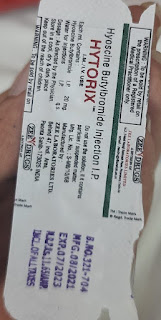A 21 year old female presented by severe pain in right iliac fossa since 3 days
This is online e log book to discuss our patient's de - identified health data shared
after taking her guardian's signed informed consent .
Here we discuss our individual patient's problems through series of inputs from available global online community of experts with aim to solve those patients clinical problems with collective current best evidence based inputs.
This E log book reflects my patient-centered online learning portfolio and your valuable inputs on the comment.
Bunni Sadhguna
Roll no. 25
A 21 year old female ,student by occupation, resident of Badrachalam came with chief complaints of pain in right iliac fossa since 3 days.
History of present illnesses
Patient was apparently asymptomatic 1 day back then developed pain in the infraumbilical region which was radiated ti right iliac fossa.
History of past illness
No previous surgical history
Treatment history
No diabetes
No hypertension
No asthma
No blood transfusions
No surgery
Personal history
She is Unmarried, student by occupation, loss of appetite, Non vegetarian, bowels and micturition is normal with no allergies.
Family history
Not affected by any disease.
Vital examination
Temperature: afebrile
Pulse rate : 90bpm
Respiration rate: 22/ min
Bp: 90/60
Grbs: 84mg%
General examination
Positive to Pallor
No icterus
No Cyanosis
No Clubbing
No pedal edema
no ascites
Systemic examination
Normal cardiovascular, respiratory system,tenderness is found in right iliac fossa, not palpable liver and spleen, positive to rebound tenderness is abdomen, CNS system is normal.
Clinical findings
Appendix measures 6mm
Thickened caecal wall,terminal ileum with surrounding inflammatory changes and enlarged lymphnodes with 12mm
Few lymphnodes shows necrosis and one of the lymphnode is adjacent to Appendix
Medication
Ileocaecal TB is relatively rare in comparison to other pathologies affecting the ileocaecal region. Disease cause thickening of the caecum and terminal ileum, although the degree of thickening tends to be greater with ileocaecal TB. The involved lymph nodes in ileocaecal TB are also usually larger and are more likely to demonstrate caseating necrosis . Ancillary findings such as peritoneal involvement and loculated peritoneal fluid strongly support the diagnosis of abdominal TB . She received treatment on the working diagnosis of ileocaecal TB, and made good progress.













Comments
Post a Comment